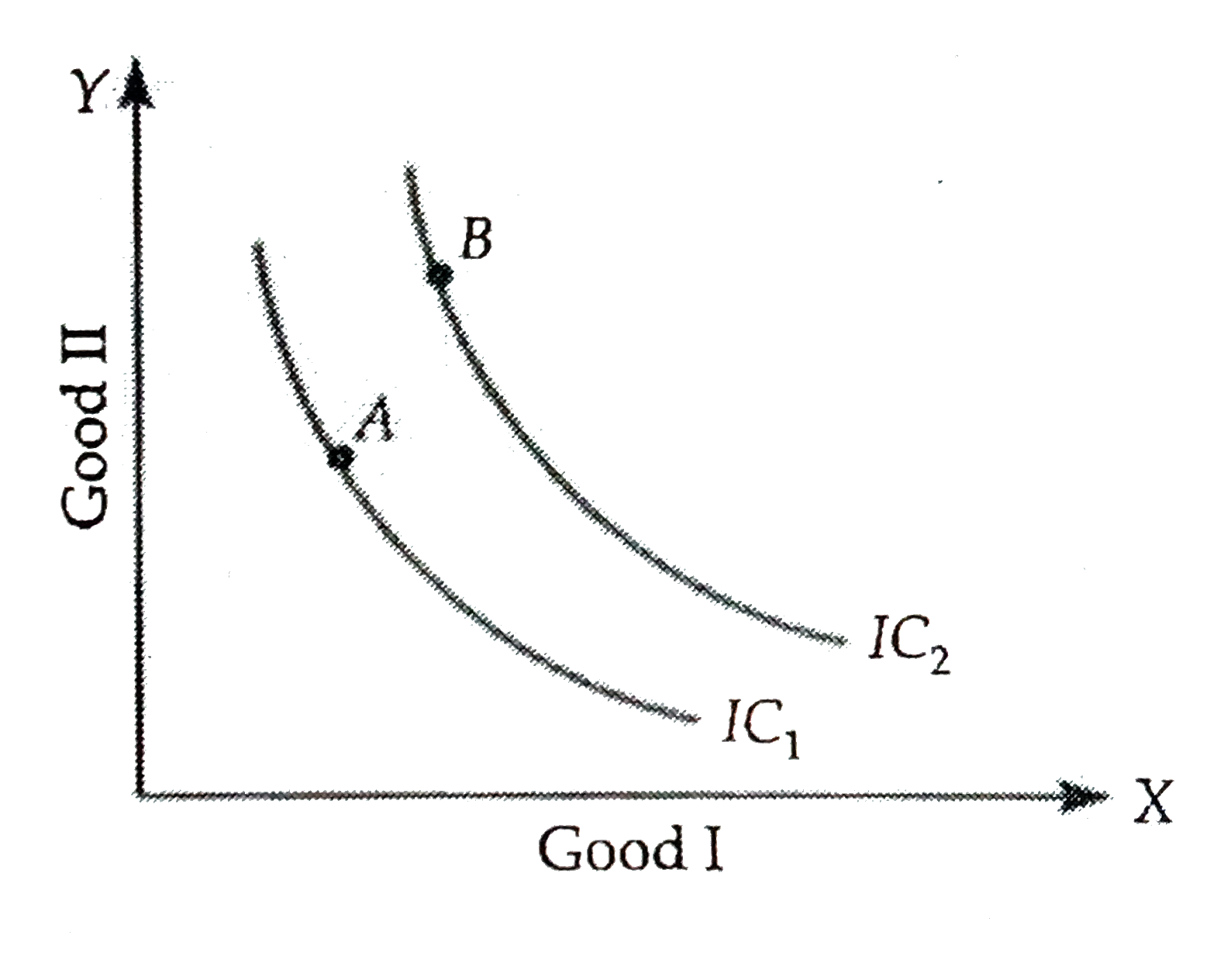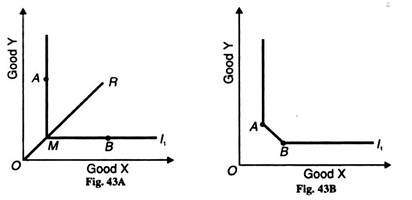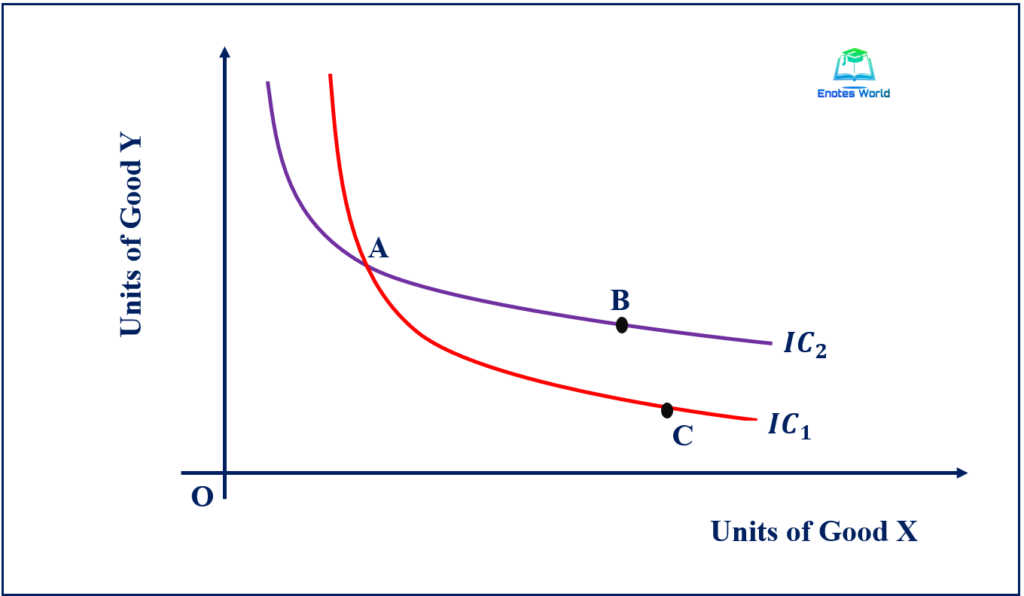- Higher IC represents a higher level of satisfaction
IC above and at the right of another IC represents preferred combinations of commodities – a higher level of satisfaction

- IC must slope from left, and down to the right (i.e must have negative slope)
With every unit increase of one commodity, the consumer becomes better off.
If a consumer is to be on the same IC, he must give up some units of another commodity.
Three Impossible shapes of IC:



- ICs do not intersect
Only one IC can pass through any one point in the indifference map.
One combination of commodities can lie only on one IC.

4. Indifference curves are convex to the origin
MRS between the commodities diminishes as we move from left down to the right along with the IC.

For every unit increase in commodity A, the consumer is prepared to part with a lesser unit of commodity B then before i.e. in every unit increase in commodity A, the corresponding loss of commodity B is less than before.
But, there are two theoretical possibilities of the MRS.
Constant MRS-straight line IC-perfect substitution between A and B
Increasing MRS-concave IC-consumer consumes only one commodity-i.e. monomania.
However, these are remote possibilities.
- IC may not be parallel
IC may be parallel only if two commodities are independent-i.e. they are neither substitute nor complementary goods and none of them is inferior or superior in relation to each other.
IC can be parallel to each other if there is an absence of income effect. But, normally, a consumer demands goods which are related goods for which the income effect is positive.
Therefore, ICs converge on both sides to one another but do not meet.
- IC is a straight line for perfect substitutes and the right angle for complementary products.
In perfect substitution, the consumer does not distinguish at all between two goods in question.
In the case of complementary products, goods can be used only in a definite, fixed proportions-any change in one without changing another-same satisfaction.
Fig: perfect substitutes
Fig: complementary products
- Complementarity of commodity and curvature of ICs
IC analyzes substitutability and complementarity between goods demanded by the consumer.

The lesser the substitutability the greater is the convexity of IC to the origin and vice versa.
- ICs do not touch the horizontal or the vertical axes
ICs touch the horizontal or vertical axes only under a condition that one commodity is completely substituted by another. This violates the basic assumption that the consumer purchases two products in a combination.



